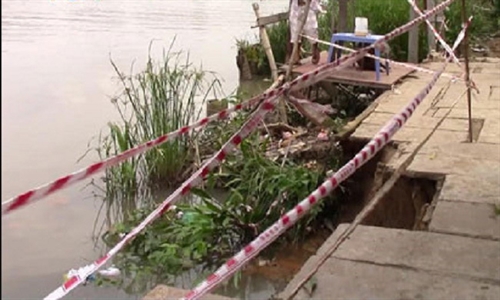 Society
Society

HCM City will relocate 1,210 households in areas prone to land erosion by rivers and canals under a larger resettlement plan that will be carried out until 2020.
 |
| An eroded site in Nhà Bè District in HCM City. The City plans to relocate 1,210 households in erosion-prone areas under a larger resettlement plan by 2020. — Photo: vtv.vn |
HCM CITY – HCM City will relocate 1,210 households in areas prone to land erosion by rivers and canals under a larger resettlement plan that will be carried out until 2020.
Most of the families will move to the outlying districts of Thủ Đức, Nhà Bè, Cần Giờ and Bình Chánh.
HCM City has about 50 eroded areas, with 30 of them considered dangerous enough to threaten property and public safety, according to the city’s Inland Waterway Authority.
Infrastructure in resettlement residential areas will be built for the households in Nhà Bè District.
The city will build a resettlement residential area in Cần Giờ District to relocate households in Cần Giờ’s Thạnh An Island Commune.
In Cần Giờ, relocation of 388 households will occur in Bình Khánh, Lý Nhơn, Long Hoà, An Thới Đông and Tam Thôn Hiệp communes and Cần Thạnh Town.
Of the 1,210 households in the city, 44 households in high-risk erosion-prone areas in Thủ Đức’s Linh Đông, Hiệp Bình Chánh and Hiệp Bình Phước wards will also be relocated.
The relocation projects for erosion-prone households will cost a total of more than VNĐ500 billion (US$22.7 million).
Last year, the city recorded 13 erosion cases, mostly in Nhà Bè, Cần Giờ and Thủ Đức districts and District 2, causing property damage worth billions of đồng, according to the city’s Department of Transport.
The HCM City People’s Committee has also urged the management board of Cần Giờ Protection Forest to speed up the process of planting and protecting forests in coastal areas.
The city’s People’s Committee has approved four canal embankment projects in Thủ Đức and Củ Chi districts that will help prevent erosion.— VNS









